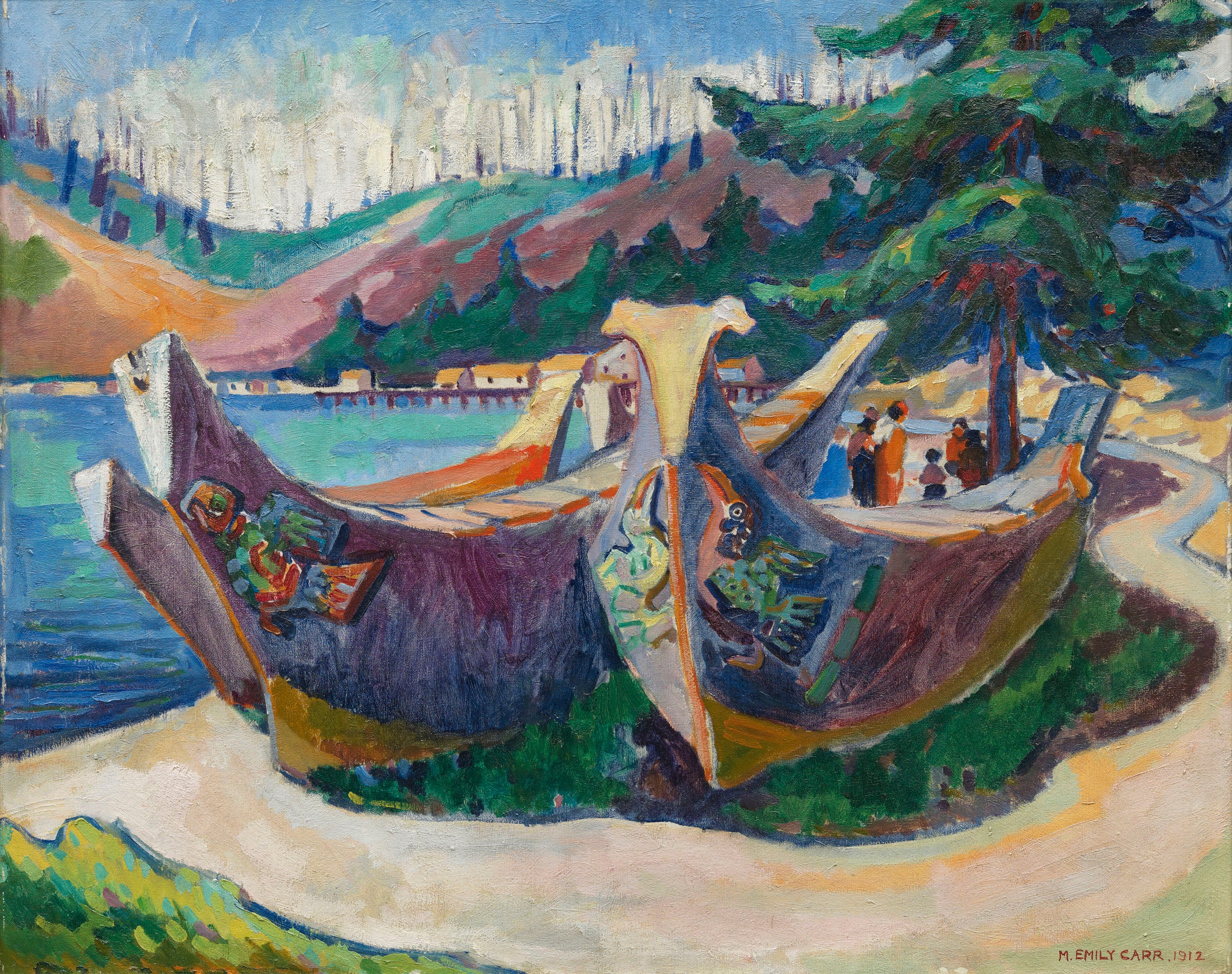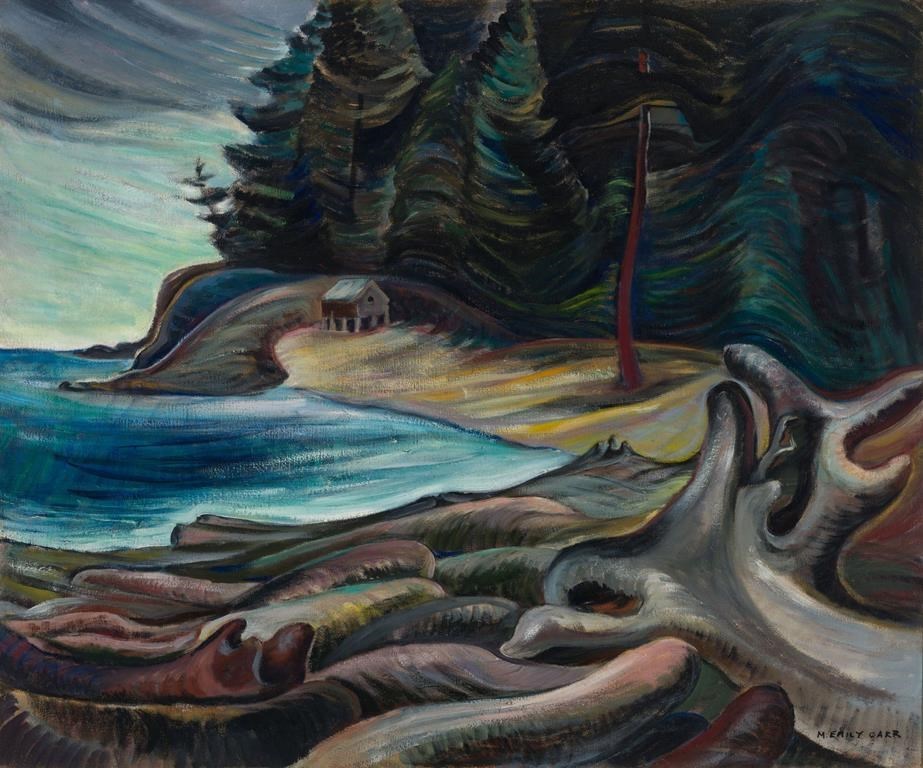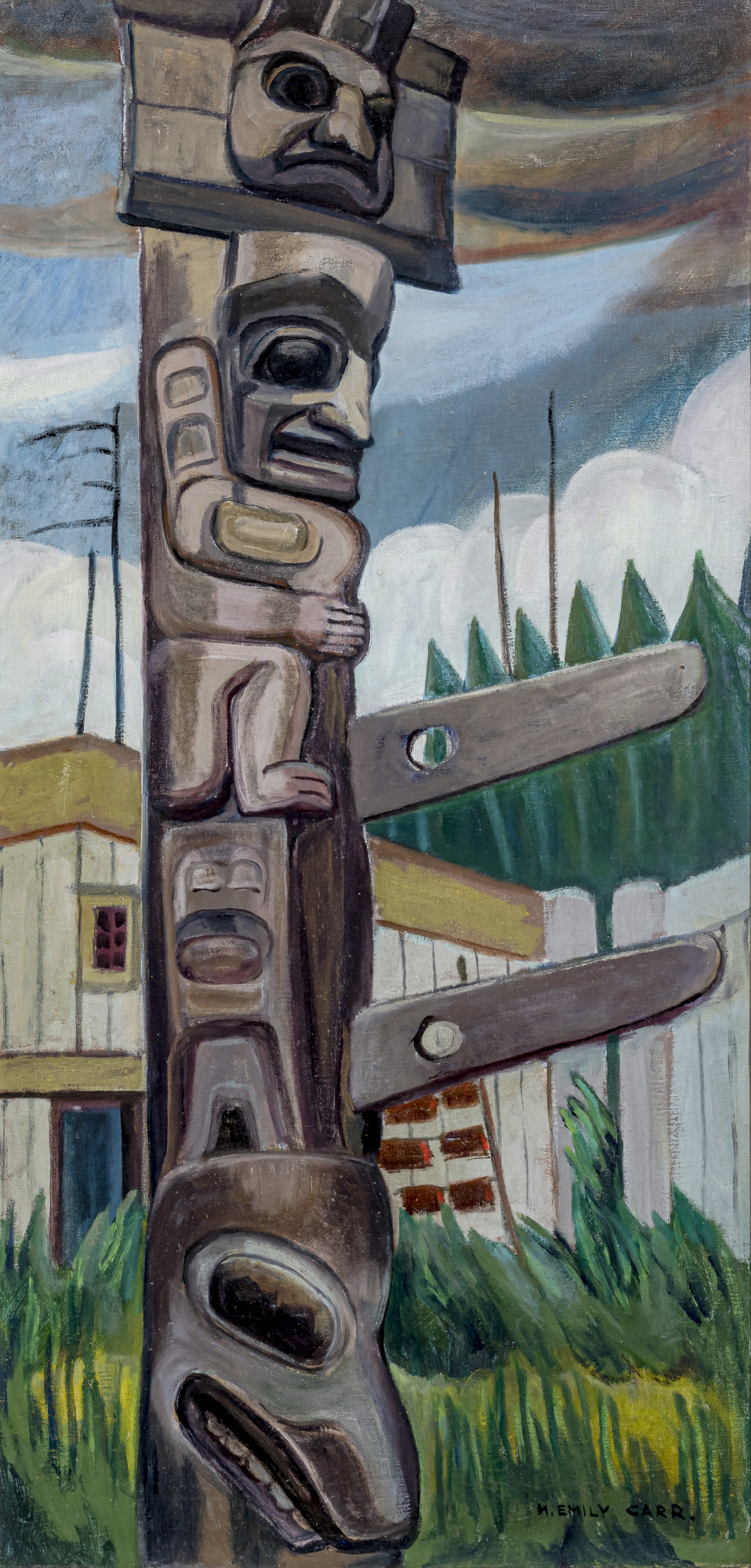
Emily Carr was born in Victoria, British Columbia. After early training at the California School of Design in San Francisco, she studied in England at the Westminster School of Art and later in France, where she encountered Post-Impressionism. These experiences exposed her to modern artistic movements, which would later influence her work in Canada.

West Coast Indigenous Subjects
Between 1907 and 1913, Carr traveled along the coast of British Columbia, visiting Indigenous villages and recording totem poles, architecture, and village scenes in her sketches and paintings. Unlike many artists of her era, Carr approached these subjects with a documentary mindset, seeking to preserve a record of cultures and traditions she saw disappearing.

War Canoes, Alert Bay, 1912 by Emily Carr
Connection with the Group of Seven
Although not an official member, Emily Carr maintained a strong professional relationship with the Group of Seven, particularly with Lawren Harris, who became a key mentor and supporter. Like the Group, Carr shared a love in portraying the Canadian landscape with a modern, expressive style. Harris encouraged her work and affirmed her place among the Group of Seven, famously telling her, “You are one of us.” With his support, Carr exhibited as an invited contributor in the Group of Seven’s 1930 and 1931 exhibitions.

Cordova Drift, 1931 by Emily Carr
Later Career and Writing
In the 1930s and 1940s, Carr concentrated on forest scenes, developing a style that simplified forms and emphasized movement and light. She also became known for her writing; her 1941 book Klee Wyck won the Governor General’s Award. Both her paintings and writing reflected a love for nature in the West Coast.

Today, Emily Carr is considered a central figure in Canadian art history. Her works are held in major collections, including the Vancouver Art Gallery and the National Gallery of Canada. She is also the namesake of the Emily Carr University of Art + Design in Vancouver. Her paintings continue to be highly sought after by collectors of Canadian historical art.

Consignment Opportunities
At Rookleys Canadian Art, we are actively seeking works by Emily Carr for consignment, offering premium commissions far below what auction houses charge. If you have a Carr painting to consign, please contact us at info@rookleys.com to discuss these opportunities further.